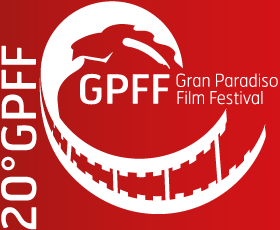
The International Competition is open to all international feature films in order to enhance and promote the knowledge of natural and environmental peculiarities around the world and to contribute to the promotion of films dealing with nature-related issues.
Ten nature-based documentaries, selected by the Festival Selection Committee among films from all over the world, compete for the "Stambecco d’Oro Trophy", awarded by the jury of the audience and the other prizes awarded by the Festival Jurys.
THE SELECTED FILMS
GIRAFFE - UP HIGH AND PERSONAL, di Herbert Ostwald. Austria, 2015 - 50'
Long legs, tall neck, wide eyes – giraffes are the beauties of the African savannah. But there is so much more to these gentle giants: their exceptional body, their distinctive behaviour, their secret social life. So far, giraffes have barely been more than decorative extras in wildlife films, towering over the savannah. Our production takes a fresh look at these tallest animals of all, revealing brand new details about the secret lives of this true African icon. We present giraffes in the savannah of Kenya, in the South African grassland as well as in the desert of Namibia. The visual style is very different to the usual approach: amazing camera perspectives, a fresh way of framing and stunning points of view, together with spectacular, never before seen material will add up to a comprehensive and entertaining portrait of Nature's High Society.
DAR PANAHE BALOOT, di Mehdi Noormohammadi. Iran, 2015 - 55'
Persian Squirrel is one of animals that live in oaks. Life of this small mammal depends on the oak forests. There are many challenges facing this small friend of Zagros Jungles.
OSTRICH - A LIFE ON THE RUN, di Mike Birkhead e Martyn Colbeck. Austria, 2015 - 50'
The ostriches of Namibia face an enormous annual challenge: choosing exactly the right moment to breed. The birds must ensure that their clutches hatch around the time of the rains. If the timing is wrong, food will be scarce - and the chicks will die. If it’s right, then a new generation will get the chance of a life on the run. Many of the remaining wild ostriches of Africa live in the Namib Desert, the oldest desert in the world. Here, hot, dry winds blown from South Africa bake the parched sands, and the territorial call of the male ostrich can be heard resounding across the dunes. This nomadic bird has no permanent home. Instead, it wanders with a harem of hens that it must constantly defend from neighbouring males. The birds are an incredible sight. Avian record breakers, the black and white males are the tallest and heaviest of all living birds. On the eastern edge of the desert, at the height of the dry season, these giants show their strength. Flicking their wings in aggressive displays, the males charge at each other, hoping to scare away any challengers to their mating rights.
PASSION FOR PLANET, di Werner Schuessler. Germany, 2016 - 103'
PASSION FOR PLANET takes us on an adventure around the globe. In front of the most spectacular natural backdrops and wildlife observations we dive into the universe of the world's best wildlife filmmakers. Facing the pain of the destruction of the natural world, they now have to ask themselves: Can they save their love? PASSION FOR PLANET is an allegory about our growing up as humans – as society and as mankind: The call to mature - performed by our protagonists as our representatives. From innocent childlike unconcern, growing into realizing our interdependency. Thus overcoming our selfishness and devoting ourselves to the good of the greater whole...
LES PEUPLES DES OCEANS, di Guillaume Vincent. France, 2016 - 52'
François Sarano, oceanographer, former companion of Captain Cousteau, will take us to discover the giants of the sea, the cetaceans, the descendants of carnivorous land mammals. From Mauritius to the Bahamas, from French Polynesia to the shores of Argentina, François dives with sperm whales, orcas, dolphins, whales, close and among them. These giants have adapted to water, have grown to be the largest animals living on the earth. They conquered the oceans, invented new senses, developed languages, built complex societies. With the big hunts abolished, we are creating new relations with our brothers of the oceans and thus to discover them differently. We can finally, with François, dive into the planet of giants! To meet the giants of the sea, the cetaceans, we will follow François Sarano, oceanographer, former companion of Commander Cousteau. In Argentina, in the Valdes peninsula, lives a family of orcs unique in the world that François Sarano absolutely wants us to discover: to hunt and feed, these orcs end up on the beaches to catch the elephant seals! A technique that requires a very long and difficult learning and that Valdes orcs are the only ones in the world to own.
ANTARCTICA, SUR LES TRACES DE L'EMPEREUR, di Jérôme Bouvier. France, 2016 - 90'
A frozen continent of 19 000 000 km2, the Antarctica seemed until now protected from climate change. But disturbing signs on biodiversity and on the ice cycle are emerging today. The mortality rate of the Emperor Penguin chicks is becoming more and more worrying. A true ice sentry, the Emperor is at the heart of the Southern mechanics and plays the role of bioindicator of this extraordinary territory. In order to document and explain the phenomena taking place in Antarctica, Laurent Ballesta and Vincent Munier, photographers, embark for the Dumont d'Urville base. Accompanied by scientists, they will try, above and under the ice, to decipher the role that the Antarctica is playing in our global ecosystem and the issues that threaten its future.
LA VIE SAUVAGE, di Rupert Barrington. United Kingdom, 2015 - 92'
La Vie Sauvage takes us on the greatest of all adventures – the journey through life. It is a story that unites each of us with every animal on the planet, because we all set out on this journey from the moment we are born. For animals there is just one goal in life – to continue their bloodline in the form of offspring. They are an animal’s legacy for the future. The story of their journey is about hope, facing danger, actions of breath-taking boldness, extraordinary behaviours and, ultimately, success against the odds. This programme follows that journey through its six crucial stages: surviving infancy, growing up, finding a home, gaining power, winning a mate and succeeding as a parent. La Vie Sauvage brings a new level of story-telling to the landmark genre, creating an experience that is both intimate and intense. We follow the struggles and triumphs of individual animals, drawing the viewer into their worlds to sense the danger, the challenges and the decisions they must face.
DAVID ATTENBOROUGH'S LIGHT ON EARTH, di Joe Loncraine. Austria, 2016 - 51'
The spectacular and magical light produced by glowworms, fireflies and luminous plankton is known as bioluminescence - light made by living creatures. But those quite familiar glows and flashes are just a tiny, easily observed fragment of a previously unexplored, mysterious realm. The sea at night sparkles, as millions of luminous plankton reveal the shapes of dolphins in a truly magical light show. But why do animals produce light of their own? For centuries, we could only marvel at the beauty and the mystery. But now, for the first time we can begin to reveal the amazing truth about living lights. Sir David Attenborough will be our guide, as we venture into a world he describes as "utterly unlike our own". He and a team of the world’s leading scientists take us on a quest into the fascinating realm of living light
DESSINE-MOI UN CHAMOIS, di Anne e Erik Lapied. France, 2016 - 67'
Colin is 9 years old and lives in Grenoble. He is a small city dweller like the others. However, the activity of his grandparents, animal filmmakers, intrigues him. No matter if it snows or if it is windy, they are up there to track and film mountain animals: black grouse, marmots, ibex, weasels, ptarmigan... His days off, he goes up to visit them in their small hamlet perched at 1,650 m of altitude, in the Gran Paradiso National Park. There another school is waiting for him. The path of learning will be long of patience, discouragement and effort, before the golden eagle is no longer that tiny dot in the sky, and the chamois a flash that flees at his approach. Colin learns to be discreet, to recognize traces, to walk with crampons, bivouack at altitude. A beautiful family complicity is born. An animal is missing, to see it Colin puts his grandfather to the test. Will he manage to find him?
AMERICA'S NATIONAL PARKS: SAGUARO, di Yann Sochaczewski e Henry M Mix. USA, 2015 -48'
Saguaro National Park in Arizona stands out as North America’s most unique desert. Home to the iconic symbol of the Southwest, the saguaro cacti towers above all else, it’s shallow roots keeping some as old as 200 years precariously in place. Here, under the shade of the Saguaro, a rich diversity of fauna and flora turns this seemingly uninhabitable landscape into a wild oasis. What makes all this possible is the aptly named fifth season, which brings with it wild, tropical-like thunderstorms and heavy rains. After a brief but powerful storm, the reinvigorated wildflowers blossom with unprecedented beauty and many of the park's animals, big and small, reappear from the cracks and crevasses to take advantage of this new burst of life. Javelinas and their offspring roam the desert floor for food, the famous roadrunner darts between spiky shrubs, western diamondback rattlesnakes show off their mating rituals, and the Costa’s hummingbird starts the delicate construction of its nest, built primarily from spider webs. With its array of plant and animal life, Saguaro National Park is a fascinating and fragile paradise, which sits between heaven and hell.
